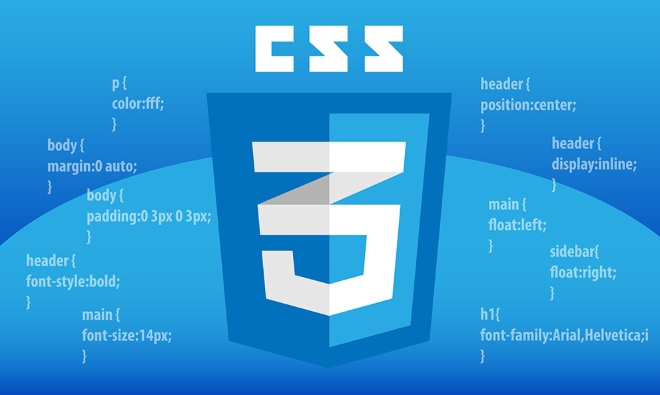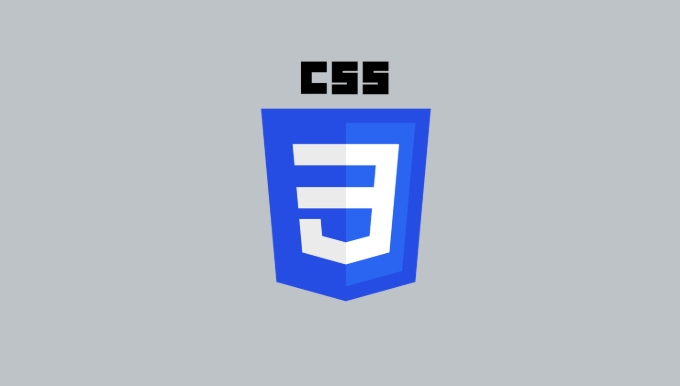The problem with z-index often stems from insufficient understanding of the stacked context. 1. z-index is only valid in the same stacking context, and the parent container level determines the upper limit of the child elements; 2. The way to create a new stacking context includes setting non-static position, non-auto z-index, transform, filter and other properties; 3. The pop-up window is blocked, which may be because the parent container has created an independent context, and it should be mounted to a higher level; 4. When multiple components are in different contexts, the hierarchy scope needs to be uniformly planned and managed with CSS variables; 5. To troubleshoot problems, you can view the computed style and temporarily add visual identity to assist in judgment.

The z-index property of CSS seems simple, but it is easy to have problems when it is really used in projects, especially when it involves multiple stacking contexts. You may encounter a situation where an element cannot be "out of" no matter how z-index is set. This is often not a problem with the attribute itself, but an inadequate understanding of the stacking context.

Here are some key points and practical suggestions that you must pay attention to when using z-index .

z-index is not a global hierarchical control
Many people think that as long as an element is given a higher z-index value, it will definitely be displayed at the top level. In fact, z-index is only valid within the same stacking context .
For example:
Parent container A has z-index: 100 , child element B has z-index: 9999 , and another sibling element C has z-index: 200 .
Although the value of B is much greater than C, because it belongs to the stacking context of A, the hierarchy of A itself is lower than C, so B will eventually be covered by C.

So when you find that an element "can't suppress" other elements, don't just look at its
z-index, but also check the entire stacking context structure in which it is located.
Creating a new cascaded context is not difficult
As long as you set any of the following properties to an element, it will create a new cascade context:
-
positionnotstatic -
z-indexvalue is notauto -
transform,filter,opacity , <code>will-changeand other properties - Use
isolation: isolate
This means that there may be a lot of nested cascaded contexts in the page, independent of each other. This is also why sometimes modifying a certain layer of z-index has little impact on the overall situation.
Several common pitfalls in actual development
Pop-up windows are always blocked?
This is one of the most common problems. If you place the pop-up window in a parent container with transform or filter set, the parent container has formed its own stacking context. Even if z-index of the pop-up window is very high, it can only "compete for the first place" within this parent container and cannot jump out of the parent to cover other components.
Solution:
- Hang the pop-up window directly to a node at
bodyor higher level (for example, using React Portal) - Check if there are unnecessary
transformorfilterthat affect the cascade structure
Do multiple positioning elements overlap each other?
This situation is common in UI components such as navigation bar, floating button, drop-down menu, etc. If these components are in different stacking contexts, it is difficult to control the hierarchy relationships by z-index alone.
suggestion:
- Unified planning of the hierarchical structure and assign different hierarchical ranges to different types of components (for example, UI components are 100~200, and pop-up windows are 1000)
- Use CSS variables to manage
z-indexvalues ??for easy unified adjustment
How to quickly troubleshoot hierarchical issues?
You can view the actual cascade order of elements through the browser developer tools:
- Select the target element in the Elements panel
- Check the
Computedstyle in the Styles panel to confirm whether a new stacking context has been formed - Look up the parent elements and see their
z-indexand position settings
You can also temporarily add borders or background colors to the elements to facilitate judgment of which elements are actually "on".
Basically that's it. z-index may seem simple, but once multiple context nestings are involved, a clearer sense of structure is required. Only by keeping the structure clear and the hierarchical order can we avoid the embarrassing situation of "crazy adjustment of z-index".
The above is the detailed content of Managing stacking contexts with CSS Z-index property. For more information, please follow other related articles on the PHP Chinese website!

Hot AI Tools

Undress AI Tool
Undress images for free

Undresser.AI Undress
AI-powered app for creating realistic nude photos

AI Clothes Remover
Online AI tool for removing clothes from photos.

Clothoff.io
AI clothes remover

Video Face Swap
Swap faces in any video effortlessly with our completely free AI face swap tool!

Hot Article

Hot Tools

Notepad++7.3.1
Easy-to-use and free code editor

SublimeText3 Chinese version
Chinese version, very easy to use

Zend Studio 13.0.1
Powerful PHP integrated development environment

Dreamweaver CS6
Visual web development tools

SublimeText3 Mac version
God-level code editing software (SublimeText3)

Hot Topics
 How can I include CSS only on some pages?
Jun 11, 2025 am 12:01 AM
How can I include CSS only on some pages?
Jun 11, 2025 am 12:01 AM
There are three ways to selectively include CSS on a specific page: 1. Inline CSS, suitable for pages that are not frequently accessed or require unique styles; 2. Load external CSS files using JavaScript conditions, suitable for situations where flexibility is required; 3. Containment on the server side, suitable for scenarios using server-side languages. This approach can optimize website performance and maintainability, but requires balance of modularity and performance.
 Flexbox vs Grid: Understanding the Key Differences in CSS Layout
Jun 10, 2025 am 12:03 AM
Flexbox vs Grid: Understanding the Key Differences in CSS Layout
Jun 10, 2025 am 12:03 AM
Flexboxisidealforone-dimensionallayouts,whileGridsuitstwo-dimensional,complexlayouts.UseFlexboxforaligningitemsinasingleaxisandGridforprecisecontroloverrowsandcolumnsinintricatedesigns.
 Creating an Auto-Closing Notification With an HTML Popover
Jun 10, 2025 am 09:45 AM
Creating an Auto-Closing Notification With an HTML Popover
Jun 10, 2025 am 09:45 AM
The HTML popover attribute transforms elements into top-layer elements that can be opened and closed with a button or JavaScript. Popovers can be dismissed a number of ways, but there is no option to auto-close them. Preethi has a technique you can u
 What is 'render-blocking CSS'?
Jun 24, 2025 am 12:42 AM
What is 'render-blocking CSS'?
Jun 24, 2025 am 12:42 AM
CSS blocks page rendering because browsers view inline and external CSS as key resources by default, especially with imported stylesheets, header large amounts of inline CSS, and unoptimized media query styles. 1. Extract critical CSS and embed it into HTML; 2. Delay loading non-critical CSS through JavaScript; 3. Use media attributes to optimize loading such as print styles; 4. Compress and merge CSS to reduce requests. It is recommended to use tools to extract key CSS, combine rel="preload" asynchronous loading, and use media delayed loading reasonably to avoid excessive splitting and complex script control.
 How to use Lotties in Figma
Jun 14, 2025 am 10:17 AM
How to use Lotties in Figma
Jun 14, 2025 am 10:17 AM
In the following tutorial, I will show you how to create Lottie animations in Figma. We'll use two colorful designs to exmplify how you can animate in Figma, and then I'll show you how to go from Figma to Lottie animations. All you need is a free Fig
 Breaking Boundaries: Building a Tangram Puzzle With (S)CSS
Jun 13, 2025 am 11:33 AM
Breaking Boundaries: Building a Tangram Puzzle With (S)CSS
Jun 13, 2025 am 11:33 AM
We put it to the test and it turns out Sass can replace JavaScript, at least when it comes to low-level logic and puzzle behavior. With nothing but maps, mixins, functions, and a whole lot of math, we managed to bring our Tangram puzzle to life, no J
 External vs. Internal CSS: What's the Best Approach?
Jun 20, 2025 am 12:45 AM
External vs. Internal CSS: What's the Best Approach?
Jun 20, 2025 am 12:45 AM
ThebestapproachforCSSdependsontheproject'sspecificneeds.Forlargerprojects,externalCSSisbetterduetomaintainabilityandreusability;forsmallerprojectsorsingle-pageapplications,internalCSSmightbemoresuitable.It'scrucialtobalanceprojectsize,performanceneed
 Does my CSS must be on lower case?
Jun 19, 2025 am 12:29 AM
Does my CSS must be on lower case?
Jun 19, 2025 am 12:29 AM
No,CSSdoesnothavetobeinlowercase.However,usinglowercaseisrecommendedfor:1)Consistencyandreadability,2)Avoidingerrorsinrelatedtechnologies,3)Potentialperformancebenefits,and4)Improvedcollaborationwithinteams.






